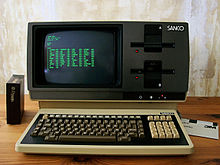CP/M, short for Control Program/Monitor, is a computer operating system developed in the mid-1970s by Gary Kildall for Intel 8080/8085-based microcomputers. It was one of the first widely used operating systems for personal computers, predating MS-DOS and other popular PC operating systems by several years.
The first version of CP/M, released in 1974, was written in assembly language and provided basic functionality such as file management, disk formatting, and simple text editing. It quickly became popular among hobbyists and early microcomputer enthusiasts due to its relatively low cost and ease of use.
CP/M 2.0, released in 1979, was a major update that introduced support for larger disk drives, hierarchical file systems, and the ability to run multiple programs at once. It also introduced a standardized BIOS (Basic Input/Output System) that allowed CP/M to run on a wider range of hardware.
By the early 1980s, CP/M had become the dominant operating system for personal computers, with thousands of applications available for it. However, it faced stiff competition from Microsoft’s MS-DOS, which was cheaper and more widely available. In 1983, IBM chose MS-DOS as the operating system for its IBM PC, effectively ending CP/M’s dominance in the personal computer market.
Despite its decline in popularity, CP/M remained in use in certain specialized applications and on embedded systems for many years. It also influenced the development of later operating systems, such as MS-DOS and UNIX.
Today, CP/M is primarily remembered as a pioneering operating system that helped to establish the personal computer industry. While it may not have the same name recognition as MS-DOS or Windows, it played a crucial role in the development of modern computing and deserves recognition for its place in computer history.
